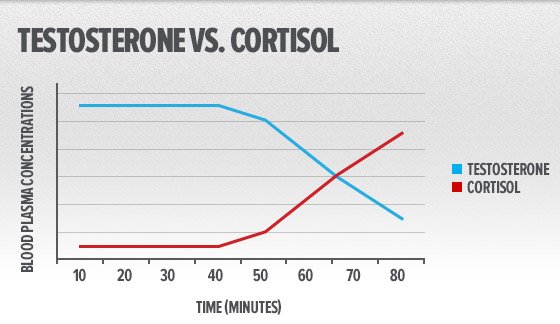Sometimes, the quest for even modest gains in muscle can seem more perilous than a journey through Middle Earth: epic, drudging, and never-ending.
But it doesn't have to be. To plot a more direct course, you need only source the experience of those who have done it successfully—those who have tested and amended the journals, textbooks, and tactics that you've likely already tried.
And it's not always what you'd expect. A keyword summary of effective strategies for mass usually contains familiar suspects like "progression," "the big 3," "recovery," "creatine," and "intensity." But these blanket strategies only work to a certain point for any one person. After that, you're left to lean on improvisation, experimentation, and the personal experiences of trusted sources.

You can put the following six hacks to work for you with confidence, knowing they've already led other people to new hypertrophic heights.
1
DON'T TRAIN FOR MORE THAN AN HOUR
Every action hero has an evil villain that fights them to the bitter end. Your body’s hormonal hero, testosterone, is no different. Its archenemy is a hormone known as cortisol.
While testosterone helps your body recover from training and use it as a springboard to growth, cortisol tries to break muscle down. It’s a constant battle between progress and regression.
The push-and-pull is both inevitable and necessary. However, just like in the movies, you want testosterone to win out in the end.
And the longer you train intensely, the more you stack the odds against your hero. When reviewing the existing data, a common trend that appears is that cortisol levels rise and testosterone levels dip starting somewhere around the 60-minute mark of an intense training session.

To maximize your strength training workouts and the muscle growth that happens between them, I suggest limiting your training to no more than 60 minutes at a time. On occasion, you can stretch it to 75 minutes—at most.
If that doesn’t sound like much time, then make up for it with your intensity. Shorten rest periods, place your muscles under an adequately heavy load, and cut out all time-wasting at the gym. Give yourself a solid hour, and you’ll give yourself a better chance to grow.
2
DO PLYOMETRICS FIRST
A workout before a workout? You betcha. This hardcore approach, used for years by strength and power athletes, is just now coming into vogue for more casual lifters because of its ability to help your body recruit more muscle fibers.
Increasing strength to produce additional muscle-building stimulus starts with increasing nervous signal impulses.
The larger the muscle fibers, the larger the motor neuron attached. Large, fast-twitch muscle fibers are designed to produce a high level of force, and in doing so also require a large electrical signal from your nervous system.
Doing plyometrics like box jumps before training legs is a great way to force your muscles into recruiting more fibers.
Similarly, implementing plyometric push-ups before training chest can set the stage for your body to deliver large electrical signals via the nervous system to recruit more and larger muscle fibers during your working sets.

More muscle recruited to the task will allow you to move more weight more efficiently, and therefore could lead to more rapid size gains.
In addition to some of the bodyweight-only plyo moves mentioned, the Smith machine offers some safe resistance-based alternatives such as bench-press throws for chest, squat jumps for legs, and explosive curls for biceps.
When performing these moves, focus on being as explosive as possible—your feet should leave the floor when jump-squatting, and your hands should leave the floor when doing push-ups—which is why the Smith machine is safer. Do 2-3 sets of no more than 3-5 reps (not to failure) before your working sets.
3
DO A VERY HEAVY TEST RUN
If you've gotten into the habit of preceding your heavy benches with 2-3 sets of high-rep work under the bar, then you might be shortchanging yourself in the intensity department.
try to do pyramid up to a very heavy load, which may initially seem counterproductive when you're about to knock out some big working sets.
Do your last warm-up set before your working sets with a weight that approaches your one-rep max.
By doing this, you're recruiting more muscle fibers than you will in your working sets of say 8-10 reps, so you can usually handle that small amount of extra weight that'll produce stimulus and growth.

This works through a mechanism called post-activation potentiation, a neuromuscular phenomenon in which strength and power output is immediately enhanced after heavy resistance exercise.1
Basically, by performing a more intense activity first (the very heavy set), you summon more total muscle fibers into play for the work sets ahead, like a baseball player swinging a weighted bat before stepping up to the plate.
Here’s how this approach might look for someone with a 300 lb. one-rep max on the bench press, and who wants to knock out 4 working sets of 8-10 reps.
- Warm-up set 1: 135 lbs., 10-12 reps, rest 2 min.
- Warm-up set 2: 225 lbs., 5-6 reps, rest 2 min.
- Warm-up set 3: 275 lbs., 1 rep, rest 2 min.
- Work sets 1-4: 240 lbs., 8-10 reps, rest 2-3 min.
By adding a very heavy set with 90-95 percent of your one-rep max (1RM), by the time you do your working sets with 80-85 percent of your 1RM, the weight will actually feel lighter, which means you may be able to do more reps for greater overall muscle stimulation.
4
ROCK OUT
Music can make all the difference in the world while training. Studies have actually shown that an athlete's mind doesn't view training as 'work' while music is playing.2,3
Music can also alter your mindset, and with the right song it can greatly help fire you up, get your adrenaline and even anger flowing, and allow you to break through those walls of nerves and lethargy that can stand between you and new muscle.
A study out of Brunel University in London found that faster tempo tunes and higher-intensity music before performance may enhance an athlete's visual perception, attention, and motor control.4
So, in addition to your wrist straps and protein shaker, it's a good idea to gear up with a quality playlist before hitting the gym, choosing tracks that get your motor running. The right jams may also help you get past the mental milieus discussed in point number three.

5
PROTEIN IS GREAT
We all know that protein powders are an invaluable and ubiquitous part of the gym life. But the science on protein and muscle-building continues to evolve, leading researchers to new nutritional avenues for maximizing muscle growth.
Science has shown us that although there are literally hundreds of variables—training intensity, sleep, stress, etc.—that affect the amount of protein our bodies need and can utilize during each feeding, the consensus is many athletes consume far more protein than their bodies can synthesize.
That's where bioactive peptides come into play. It's theorized that they can maximize the body's ability to synthesize more protein by signaling the muscle cell to call for and speed up the rate of protein synthesis, thus allowing the muscle cell to rebuild itself bigger or stronger, depending on your training goals.
Put simply, bioactive peptides, or BAPs, help you get more bang for your buck with the protein you're already taking. Take BAPs as directed with your morning and post-workout shakes, when your muscles are most in need of a quality feeding.
6
STAY HEALTHY
You have to train to grow. But you have to train in a way that keeps you healthy for the long haul. Jumping onto an active treadmill, forgetting to load the other side of the barbell, improperly using a piece of equipment—these lapses in judgment are the stuff of gym fail legend.
No one will ever be able to fully injury-proof themselves, but any time spent on the disabled list serves as a setback in your quest for growth. And unfortunately, mitigating risk is something that very few lifters factor into their conscious planning.

After 30-plus years of crushing iron and making every mistake possible, I've learned the older we get, the smarter we need to be. This is especially true in the weight room, as any slight infraction could either cause discomfort or send us straight to the hospital.
One of my favorite injury-control methods adds a few minutes to workouts, but it's well worth the effort:
Almost every dumbbell rack at any gym, family-oriented or hardcore, will have two tiers of racks. The upper tier will usually go to around 60 pounds. Then the lower rack will have the heavier weights up to 100 and even 150 pounds.
When grabbing the heavier weights from the bottom tier and walking over to your bench or seat, you risk not only injury, but you may also lose you a rep or two over time since this process fatigues muscle.
So I always grab the heavier dumbbells and put them on the top rack sideways along the top of the already-racked dumbbells. I'll also bring the seat or bench closer so that as soon as the dumbbells are secure, the next step is to sit down and press.
These two easy steps will cut the risk of injury, and may even allow you to get that extra rep.
As the physique will attest, those reps add up!
Keeping yourself in the gym and out of urgent care is the most elemental strategy for appreciable muscle gains.
REFERENCES
- Docherty, D., Robbins, D., & Hodgson, M. (2004). Complex Training Revisited: A Review of its Current Status as a Viable Training Approach. Strength and Conditioning Journal, 26(6), 52-52.
- Szmedra, L., & Bacharach, D. (1998). Effect Of Music On Perceived Exertion, Plasma Lactate, Norepinephrine And Cardiovascular Hemodynamics During Treadmill Running.International Journal of Sports Medicine, 19(1), 32-37.
- Stork, M., Kwan, M., Gibala, M., & Ginis, K. (2014). Music Enhances Performance and Perceived Enjoyment of Sprint Interval Exercise. Medicine & Science in Sports & Exercise,1-1.
- Tempo and intensity of pre-task music modulate neural activity during reactive task performance. (2014, January 1). Retrieved from http://pom.sagepub.com/content/42/5/714



No comments:
Post a Comment